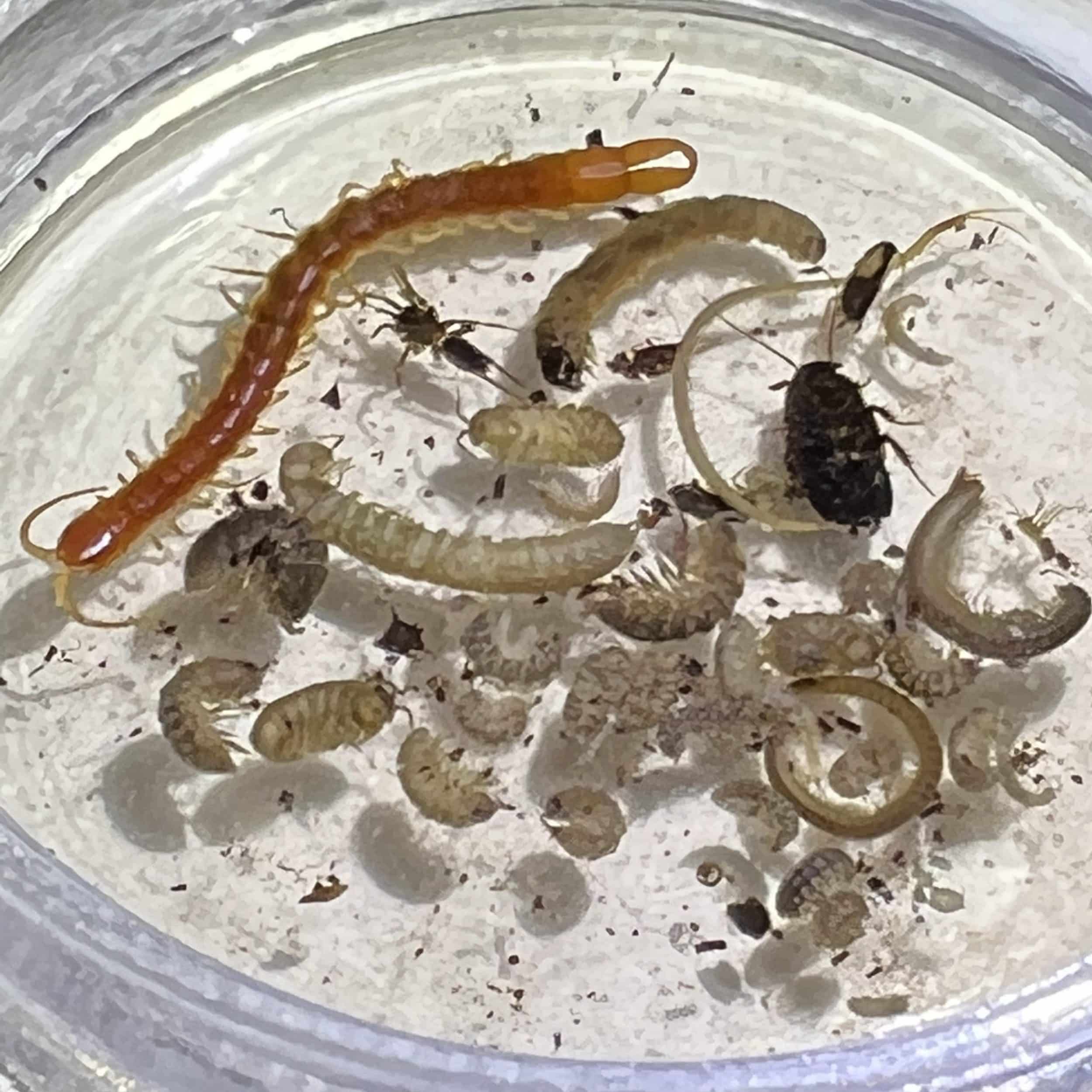Fall in the deep south occurs later than in more northern parts of the country. Leaves put on their fall colors in November here right before they carpet the ground with a mosaic of colors and texture. May I pause now to say to the naysayers – YES! We have great fall colors! OK, I feel better now.
Of course, this is also the time of year that homeowners store their lawn mowers and pick up their rakes to remove fallen leaves from their lawns. As a proud owner of a wooded lot, my rake is relegated to keeping the bulk of leaves off my gravel drive and for collecting wild grape leaves under my large live oak for use in my compost pile. The rest stays in place and contributes to a rich forest floor leaf litter community of critters. This diatribe is about the diversity of these creatures, why they represent important elements of our world, and how you can help promote their presence in your landscape.
As an Entomologist (among other interests I have), I am aware of the diversity of insects, spiders and invertebrates that can be found within leaf litter. To demonstrate for this story, I collected the loose leaf litter from a square-foot area of my leaf-covered lot and extracted the critters within it in a Berlese Funnel – a contraption that uses heat from a light bulb to force animals through the litter, down through a funnel, and into a jar of alcohol.
I counted about 70 individual creatures from this relatively small part of my landscape. Imagine how many more occupy the remainder of my 1-acre lot! Yes, the numbers add up fast. These creatures both depend upon the cover of leaves and contribute to their decomposition, that in turn provides much needed nutrients to the plants growing in our relatively poor soils. Leaf litter also helps maintain soil moisture.
So, who are these creatures? The photo below shows the bulk of the collection that includes two species of centipedes, three species of millipedes, one species of spider (I know there are more out there), terrestrial isopods (roly pollies – the bulk of the larger critters present), 2 species of roaches, a beetle grub, an unidentified larval insect, and numerous small soil mites and springtails – the latter being a curious group of insects that can flip themselves into the air when disturbed. At times, the numbers of mites and springtails can be enormous.

So what, you ask? Well, these critters form an important ecosystem by themselves, including those that feed on the bacteria and fungi growing on the litter and the predators that feed on them. But, many of these same critters are prey for larger animals, like Brown Thrashers that specialize in feeding within leaf litter and numerous species of skinks, lizards, and small snakes. In winter, this same leaf litter also serves to protect overwintering pollinators like solitary bees and moths.
As to how you can help promote leaf litter critters, even in a portion of a grass lawn landscape, may I suggest the following. Use leaves as mulch in your flower or shrub beds and around your large trees. A rich layer of leaves will help retain moisture, suppress weeds, and contribute nutrients as it decomposes. All of this reduces the need to purchase mulch or fertilizer. I hope that you consider leaving the leaves where they can do the most good.
For more information about the value of leaf litter, visit the Xerces Society at https://xerces.org/blog/leave-leaves-to-benefit-wildlife
Hope to see you in our great outdoors!